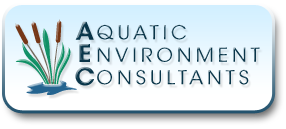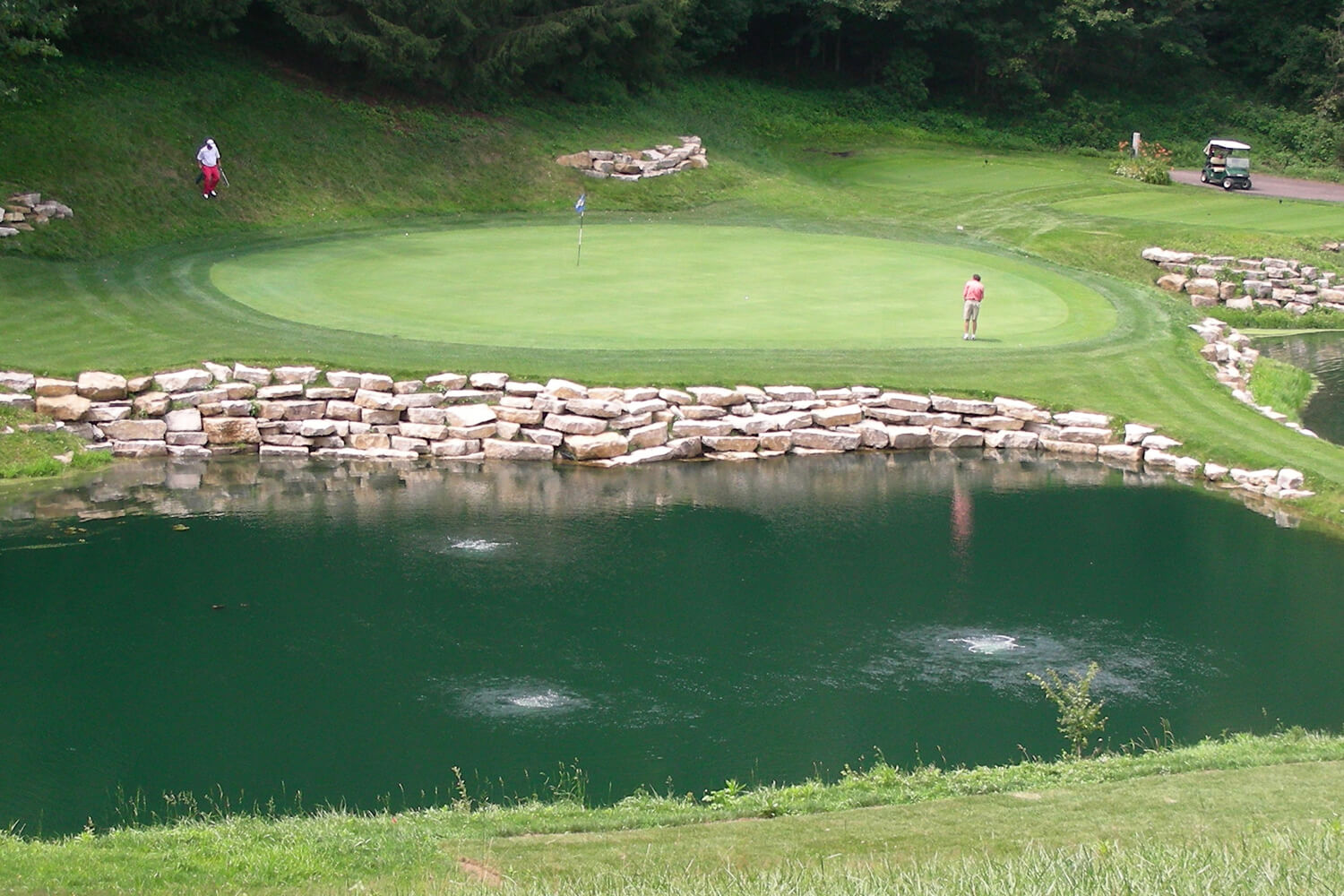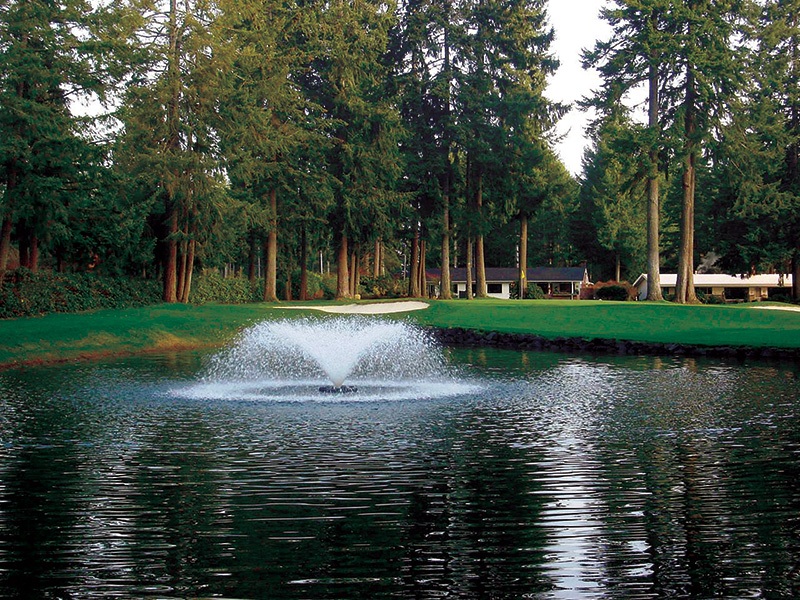Any waterbody can benefit from aeration, but it’s the type of aeration that’s difficult to choose. Understanding the composition of your pond and having goals that will best suit your pond’s health will help you confidently make that decision. The two most common types of artificial aeration are:
- Floating fountains
- Diffused aeration
Before you choose the type of aerator for your body of water, you must understand the function of these two types of aeration. Then, with the help of our team at AEC, you can weigh the benefits they provide for your pond or lake.
Diffused Aeration
Diffused aeration systems utilize a compressor located on the shoreline to push air through diffusers at the bottom of the waterbody. This type of aeration provides the most benefit in terms of full waterbody aerating because it mixes the entire waterbody from top to bottom.
If your waterbody is deep enough that it stratifies during the summer, this method works effectively to keep your pond uniform no matter the depth in terms of dissolved oxygen and temperature.
Waterbodies that have greater depth benefit most from this type of aeration. Increased depth tends to lead to stratification in the summer months, as the water warms and separates from the cooler water. Over time, as aerobic bacterial activity expends the available oxygen, the cooler layer of water at the bottom becomes anoxic.
If your pond becomes anoxic, you may experience a surplus of nuisance pests, such as:
- Purple loosestrife
- Brazilian Elodea
- Hydrilla
Diffusers located on the bottom of the waterbody create lift using air bubbles that carry the anoxic water to the surface, allowing it to absorb oxygen. A properly sized diffused aeration system will prevent this stratification during the hot summer months.
Floating Fountains
Aerating fountains are floating surface aerators that utilize an oil-cooled motor that propels the water into the air at a variety of different heights. The size (horsepower) of the motor will determine how much water the unit will move and the size of the pattern. The choice of the pattern will also have a dramatic effect on the amount of water that is moved through a unit.
One manufacturer of fountains that we carry lists the pumping rates in gallons per minute (GPM) of their units. A more open type of pattern could move more than 500 GPM with a 1 horsepower motor, whereas a pattern that is restricted by a decorative nozzle may only move about 100 GPM with a motor of the same horsepower. To put this in simpler terms, think about the amount of pressure that comes from your garden hose when it doesn’t have a nozzle attached versus when a spray nozzle is attached to it. There’s a big difference!
Fountains provide some aeration benefits, as they cascade water onto the surface of a waterbody, but usually not for the entire water body, depending on its size. Fountains are most commonly purchased for their aesthetics because they can have ornate patterns and lights. Surface aerators or fountains only draw water from within the first few feet of the water body because of how they are constructed. These would best suit those who have shallower ponds (not deep enough to stratify) that would enjoy them for their aesthetics.
Contact AEC for Pond Aeration Help
Each type of aeration system is best suited for specific applications. By knowing accurate information regarding the size and depth of your waterbody, you will be better prepared to make your choice. AEC is here to help you determine that information, like the width or depth of your pond, and help in the aerator selection process. Contact us today to learn more about your pond aeration options!



3 Comments
Thank You
Add Comment